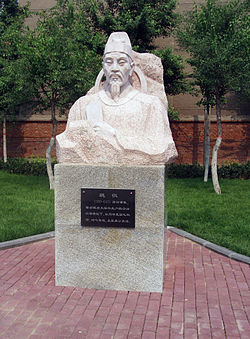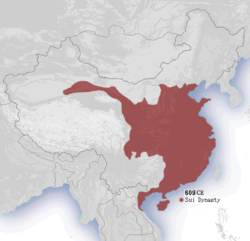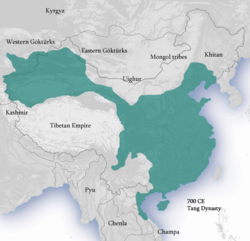Jinsei Iki-ni Kanzu
(*”WeiZheng” by Taken by Fanghong – Own work.)
Wei Zheng (https://en.wikipedia.org/wiki/Wei_Zheng) was one of the most important retainers in Tang Dynasty (https://en.wikipedia.org/wiki/Tang_dynasty). Wei Zheng created this phrase, which was brought in Japan. Tan Dynasty and its predecessor Sui Dynasty (https://en.wikipedia.org/wiki/Sui_dynasty) in China were the ones Japan learned the most from. What Zheng said is very true and also fitted very well in the Japanese philosophy in those days, it stayed long and is still used as one of the proverbs appreciated by numerous Japanese educated people.
(**”Cheui Dynasty 581 CE” by Ian Kiu – Own work.)
(***”Tang Dynasty circa 700 CE” by Ian Kiu)
“Jinsei” means “one’s life.” “Iki-ni Kanzu” means “one takes actions because one was impressed by someone else’s spirit or heart,” not because one wanted monetary reward or fame – whatever humans desire. Yes, humans are humans, not the God. Most of the time, you do something because you want something else in return. It’s out of necessity.
On the other hand, there must be occasions where you do something very special for others without rewards. That is because their spirit or heart drove you to do so. This is a big difference between humans and animals. In other words, you are no better than animals if you take actions only to get something you want.
The proverb has survived in Japan for nearly 1,500 years because, I believe, the philosophy of the ancient Chinese politician was well fit into Japanese Samurai Warriors’ mindset. Once it was fully absorbed in Samurai society, it was well developed into the Japanese traditional ethics combined with Buddhist ethics. It was perfect. The Japanese are the people who highly appreciate and respect ethics, you know. Their history tells you.
Special Trial Lesson ($19.99 tax included) – Click Here!
[Credits]
*Licensed under CC BY 2.5 via Commons – https://commons.wikimedia.org/wiki/File:WeiZheng.jpg#/media/File:WeiZheng.jpg
**Licensed under CC BY 3.0 via Commons – https://commons.wikimedia.org/wiki/File:Cheui_Dynasty_581_CE.png#/media/File:Cheui_Dynasty_581_CE.png
***Tang Dynasty 700 AD from “The T’ang Dynasty, 618-906 A.D.-Boundaries of 700 A.D.” Albert Herrmann (1935). History and Commercial Atlas of China. Harvard University Press.. Licensed under CC BY-SA 3.0 via Commons – https://commons.wikimedia.org/wiki/File:Tang_Dynasty_circa_700_CE.png#/media/File:Tang_Dynasty_circa_700_CE.png






